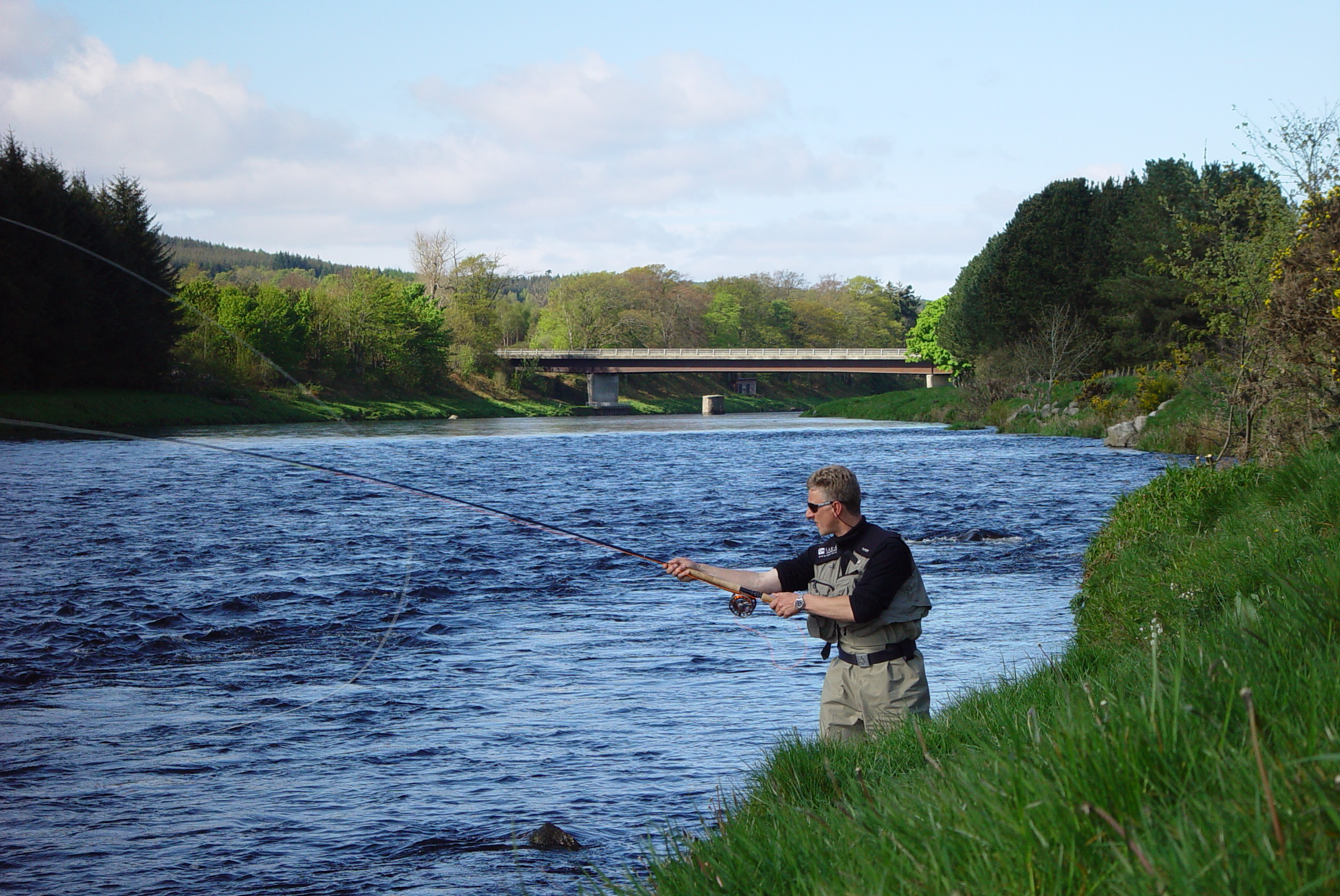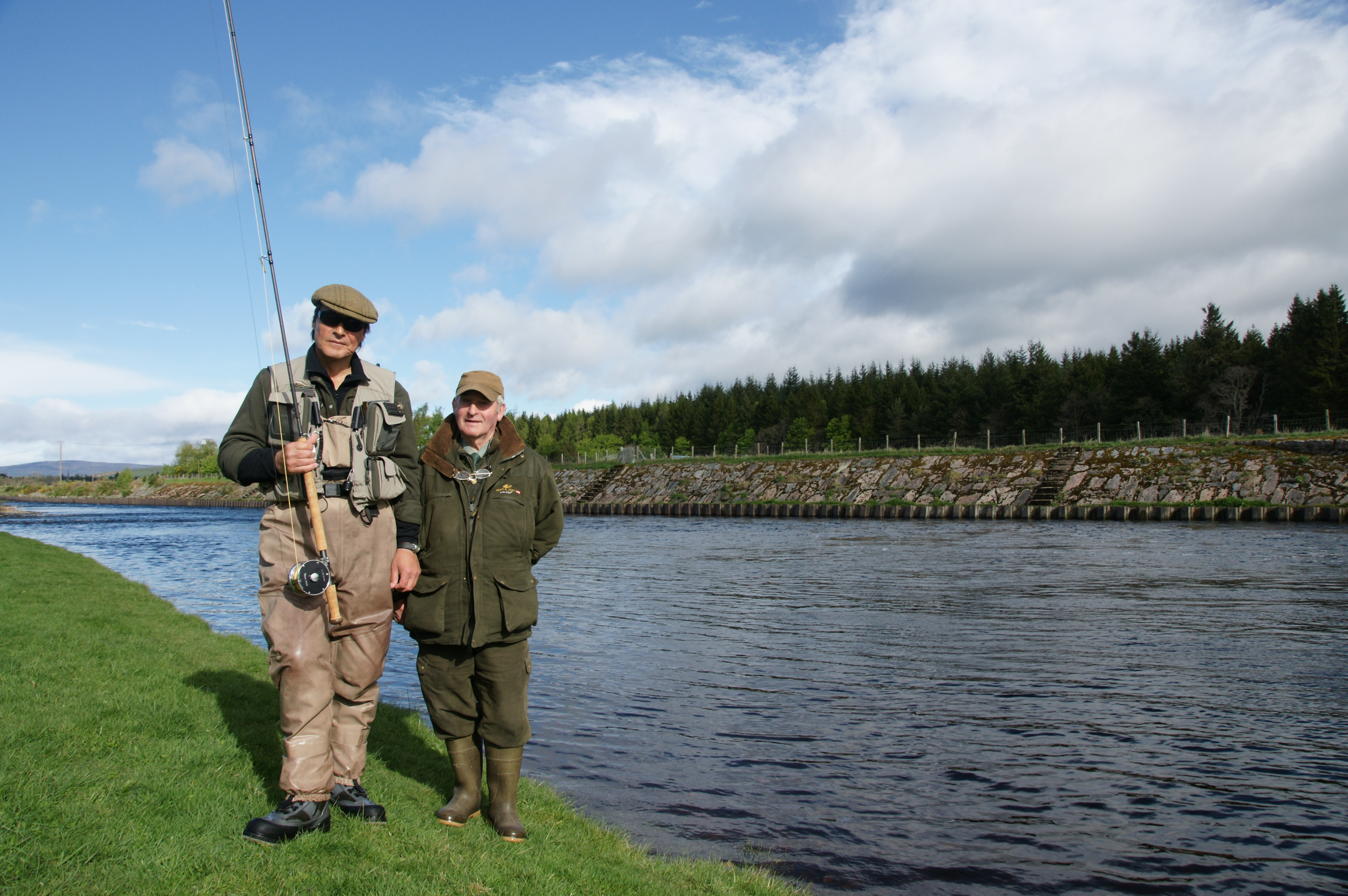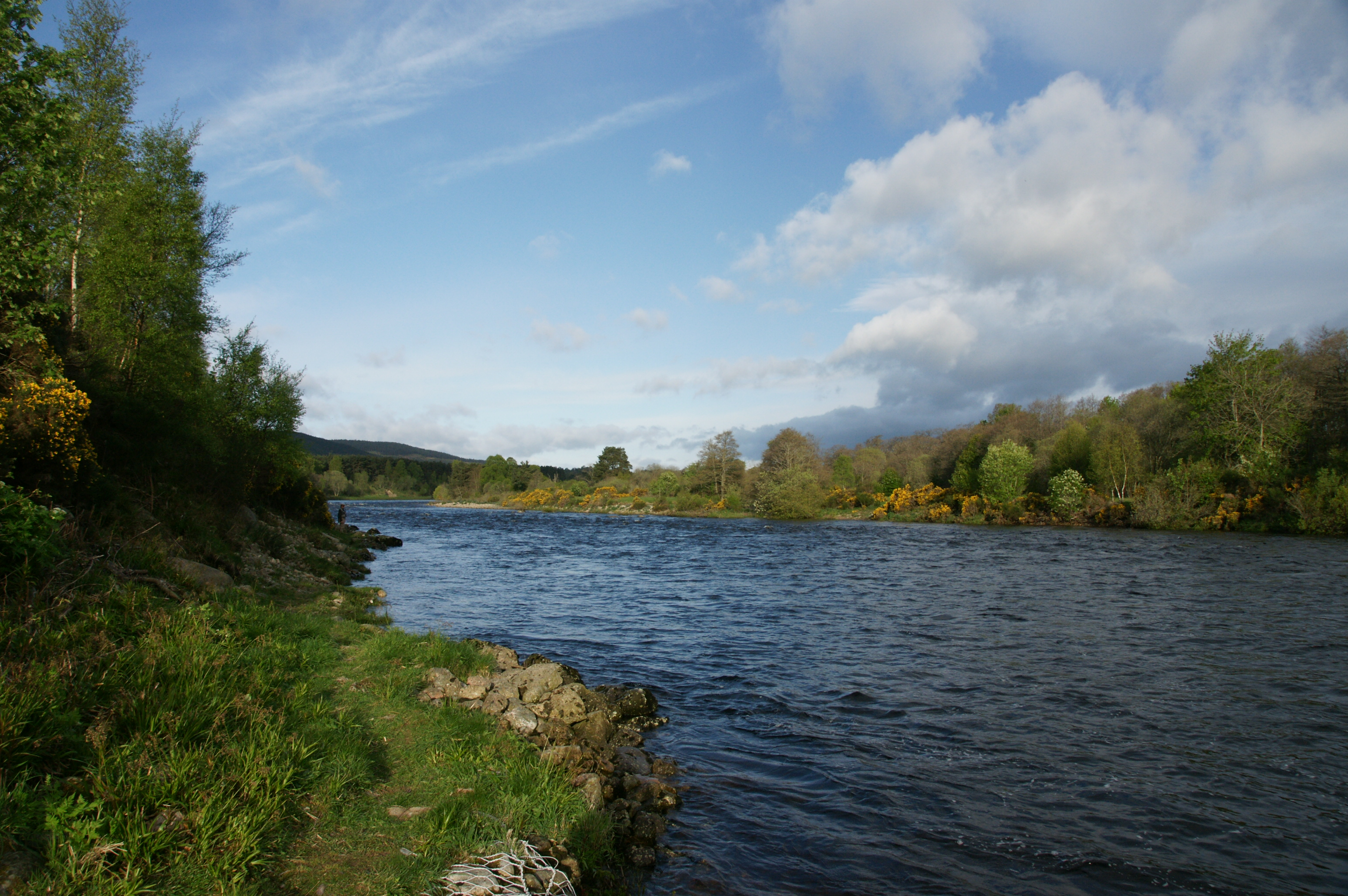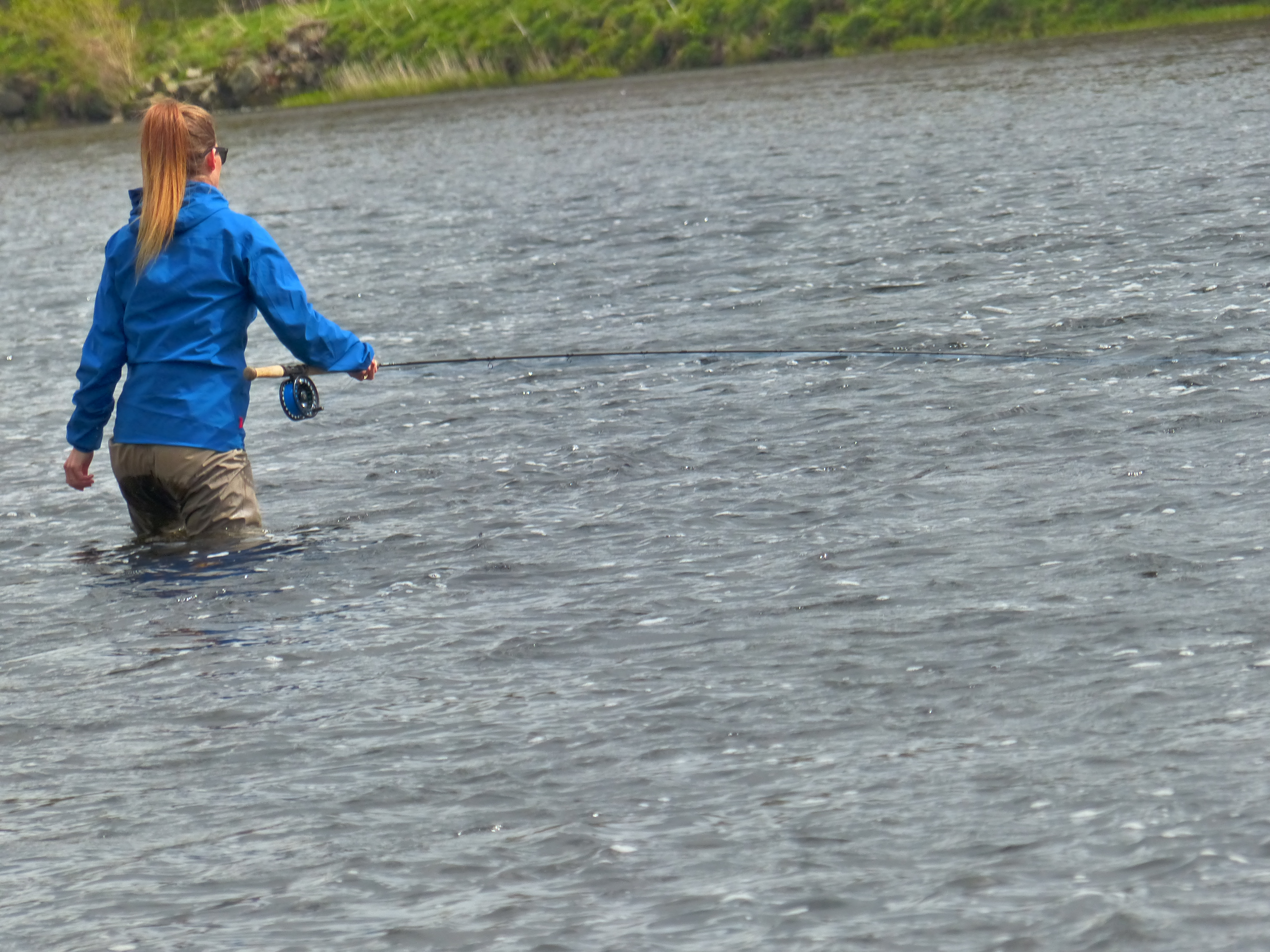
The River Dee is internationally famous for its salmon fishing and especially so for its multi-sea winter spring salmon, with anglers coming from all over the world to fish it. In addition to the increasing run of spring fish, the river also provides some excellent summer fishing for salmon, grilse and sea trout.

River Dee is one of the top four British salmon rivers, the Dee rises in the Cairngorm Mountains and flows for over 80 miles through the Grampian region in north east Scotland before it enters the North Sea at Aberdeen. It has a fascinating setting in Royal Deeside, the area around Braemar and Ballater, where the Royal Family have spent their summers at Balmoral Castle since the reign of Queen Victoria. The Dee has a deserved reputation as one of the world’s great salmon rivers. Since the 17th century, anglers have been sport fishing on the river for its famous run of salmon. Victorian salmon anglers enjoyed some of the finest fishing in the Dee’s angling history and their innovative approach to fishing tackle design is still reflected in tackle today.With the advent of Victorian fly fishing tackle, the evolution of modern rods and reels had begun. No longer were salmon played on a ‘tight line’ or line tied to the rod tip, but rather a ‘loose line’ which ran through the rod rings. This allowed greater opportunity to land big Dee salmon, which the ‘tight line’ method was simply no match for. .

The Dee is one of the earliest producing rivers in Scotland and takes great pride in the fact that it produces more spring fish caught to the fly than many other rivers in Britain. The river catchment covers an area in excess of 2000 sq kilometres.The river is administered by the Dee Salmon Fishery Board, the members of which are elected every three years by the Dee fishery proprietors. The Dee Board sets and directs policy for management of the river’s migratory fish stocks and their habitat, assisted by advice from the River Dee Trust. The fishing season strarts 1st of February to 15th of October including a trial extension period of two weeks. It is proposed that the Conservation Code restricts this extension to the portion of the river downstream of Aboyne Bridge and that no fishing takes place upstream of that bridge in the month of October. The River Dee’s spring salmon fishing is of international renown having high numbers caught compared with some other rivers in Scotland. Commencing on the 1st February, the best spring fishing is to be had in the lower and a few of the middle-lower beats which open that month, with the remaining beats opening on 1st March. Given good water conditions fish can run upstream quickly to the upper beats during March and by April/May the main body of spring fish will be passing through the middle beats into the upper river. Water height and temperature can play a big part in the movement of fish at any time of the season but especially in the spring when snow and/or rain in the western catchment can quickly influence water conditions. All pools are readily fished from the bank or are easily waded. The Upper Bridge and Birkenbaud are sometimes fished from a boat at the ghillie’s discretion. Different pools favour differing heights of water and wind directions, with fishable water available throughout the season. Rods rotate between combinations of pools each half day to give all equal opportunity. Five year average: 410 salmon/grilse and 55 sea trout, 1.75 miles left bank and 2.5 miles right bank fishing, 12 pools. The Lower Crathes/West Durris beat provides predominantly double bank fishing on the Lower Dee below Banchory. Lower Crathes comprises the left bank from two thirds of a mile above Durris Bridge to one mile below with the West Durris beat occupying the right bank, from one and a half miles above the bridge to one mile below.

Accommodation can be arranged at various guesthouses, bed and breakfast or local country hotels. We recommend the Ramoir House Hotel or the Banchory Lodge hotel, both in Banchory or the Balfour House near Aboyne. These hotels are first class and offer top services. As for B&B, there is the Lochton House close to the Lower Crathes and West Durris. The fishing week is full 6 days, from Monday morning until Saturday evening (no fishing on Sundays in Scotland) Rods rotate between combinations of pools each half day to give allequal opportunity. One fishing hut on the Lower Crathes side serves the beat. The hut has a wood burning stove, w.c. and telephone. The use of the rent a car is very useful as it gives you so much freedom to do what ever you like at any time, fishing after dinner, shopping, touring around, early morning fishing etc. Additionally there are three shelters for the use of fishers and the hut, shelters and fishings as a whole are easily accessible by car
 Banchory Lodge Hotel. Accommodation can be arranged at various guesthouses, bed and breakfast or local country hotels. We recommend the Ramoir House Hotel or the Banchory Lodge hotel, both in Banchory or the Balfour House near Aboyne. These hotels are first class and offer top services. We reccomend the Banchory Lodge Hotel we have been accommodated there for the last 14 years. The Hotel is situated only few meters from the DEE river. The rooms are spacious and comfortable with TV and coffie bar. As for B&B, the Lochton House is a family run 3 star bed and breakfast very close to several beats on the River Dee, particularly the Lower Crathes and Durris beat. During the last six years theyt have had many groups of fishers, several of whom return year after year, including lax a members!
Banchory Lodge Hotel. Accommodation can be arranged at various guesthouses, bed and breakfast or local country hotels. We recommend the Ramoir House Hotel or the Banchory Lodge hotel, both in Banchory or the Balfour House near Aboyne. These hotels are first class and offer top services. We reccomend the Banchory Lodge Hotel we have been accommodated there for the last 14 years. The Hotel is situated only few meters from the DEE river. The rooms are spacious and comfortable with TV and coffie bar. As for B&B, the Lochton House is a family run 3 star bed and breakfast very close to several beats on the River Dee, particularly the Lower Crathes and Durris beat. During the last six years theyt have had many groups of fishers, several of whom return year after year, including lax a members!




